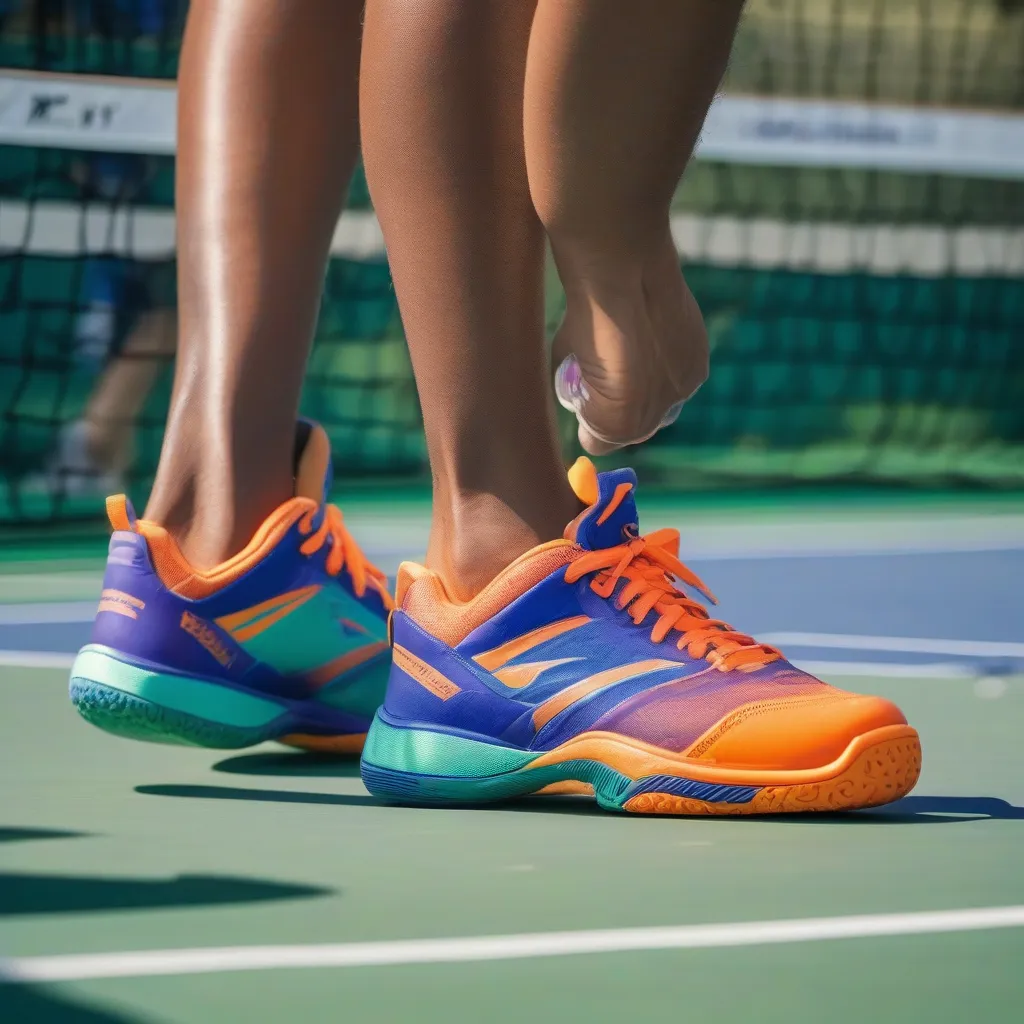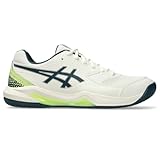Have you ever watched a seasoned pickleball player glide effortlessly across the court, reacting with lightning speed? While skill and practice are essential, their secret weapon often lies beneath their feet: the right pickleball shoes. Choosing the appropriate footwear can significantly impact your performance, prevent injuries, and enhance your overall enjoyment of the game. So, how do you navigate the world of pickleball shoes and find the perfect pair? Let’s dive in!
Understanding the Demands of Pickleball on Your Feet
Pickleball, with its quick lateral movements, sudden stops, and changes in direction, places unique stresses on your feet and ankles. Unlike running, which primarily involves forward motion, pickleball demands multi-directional agility. This means your shoes need to provide excellent lateral support, cushioning, and stability to prevent ankle rolls, blisters, and other common pickleball injuries.
Lateral Support: Your Anchor Against Ankle Rolls
Lateral support is arguably the most crucial factor in choosing pickleball shoes. It refers to the shoe’s ability to stabilize your foot during side-to-side movements, preventing it from rolling outwards or inwards. Look for shoes with a wider base, reinforced sides, and a snug fit around the heel and midfoot.
Cushioning: Absorbing the Impact
Pickleball involves a lot of jumping, lunging, and quick steps, putting stress on your joints. Adequate cushioning absorbs the impact of these movements, protecting your knees, ankles, and feet from the constant pounding. Look for shoes with good shock absorption in the heel and forefoot.
Stability: Maintaining Balance and Control
Stability is crucial for maintaining balance and control on the court. A stable shoe prevents excessive foot movement within the shoe, allowing for quick and precise changes in direction. Look for shoes with a firm midsole and a well-designed outsole that provides good traction.
Key Features to Look for in Pickleball Shoes
Now that we understand the demands of pickleball, let’s explore the key features to consider when selecting the perfect pair:
Court Surface Compatibility
Different court surfaces require different types of outsoles. For outdoor courts, choose shoes with a durable, high-traction outsole that can grip the surface effectively. Indoor courts typically require a gum rubber outsole that provides excellent grip without leaving marks.
Fit and Comfort
A proper fit is essential for both performance and injury prevention. Make sure the shoes fit snugly but not too tightly, with enough room in the toe box for your toes to wiggle. Consider trying on shoes later in the day when your feet are slightly swollen for a more accurate fit.
Breathability
Pickleball can be a strenuous activity, so breathability is crucial for keeping your feet cool and dry. Look for shoes with mesh panels or other breathable materials.
Durability
Pickleball shoes should be durable enough to withstand the wear and tear of regular play. Look for shoes made with high-quality materials and reinforced stitching.
Comparing Different Types of Pickleball Shoes
Tennis Shoes vs. Pickleball Shoes: What’s the Difference?
While some players use tennis shoes for pickleball, dedicated pickleball shoes are designed specifically for the unique demands of the sport. They typically offer better lateral support and a lower profile for enhanced court feel. While tennis shoes might suffice for beginners, upgrading to pickleball-specific shoes can significantly improve your game as you progress. “Investing in the right shoes is investing in your performance,” says a renowned sports physician, Dr. Anya Sharma, author of “The Athlete’s Guide to Injury Prevention.”
Running Shoes: A No-Go for Pickleball
Running shoes are designed for forward motion and lack the lateral support needed for pickleball. Wearing running shoes increases the risk of ankle injuries and hinders your ability to move quickly and efficiently on the court.
Cross-Training Shoes: A Decent Alternative
Cross-training shoes offer a compromise between running and court shoes, providing some lateral support and cushioning. While they are not ideal for serious pickleball players, they can be a decent option for beginners or those who play infrequently.
Maintaining Your Pickleball Shoes
Proper care can extend the life of your pickleball shoes. Clean them regularly, air them out after each use, and store them in a cool, dry place. Rotating between two pairs of shoes can also help reduce wear and tear.
 Choosing the Right Pickleball Shoes
Choosing the Right Pickleball Shoes
Finding the Right Fit: Tips for Trying on Pickleball Shoes
When trying on pickleball shoes, wear the socks you typically wear for playing. Walk, jog, and mimic pickleball movements to ensure a comfortable and supportive fit. Don’t be afraid to ask for help from a sales associate who specializes in athletic footwear. They can assess your foot type and recommend appropriate styles.
- Durable synthetic leather toe overlays
- Solution dye sockliner helps reduce overall water usage by approx. 33% and carbon emissions by approx. 45%
- Durable synthetic leather toe overlays
- Solution dye sockliner helps reduce overall water usage by approx. 33% and carbon emissions by approx. 45%
- K-EVA: Special formula EVA to provide maximized cushioning and enhance durability of the midsole.
- ORTHOLITE: Sock liner providing moisture management with properties to keep feet cool and minimize the effects of perspiration.
- Durable synthetic leather toe overlays
- Solution dye sockliner helps reduce overall water usage by approx. 33% and carbon emissions by approx. 45%
- Men's tennis shoes with a padded collar and a durable outsole
- BREATHABLE UPPER: Open mesh upper is breathable and flexible
- Women's tennis shoes with a padded collar and a durable outsole
- BREATHABLE UPPER: Open mesh upper is breathable and flexible
- K-EVA: Special formula EVA to provide maximized cushioning and enhance durability of the midsole.
- ORTHOLITE: Sock liner providing moisture management with properties to keep feet cool and minimize the effects of perspiration.
- COURT-READY PERFORMANCE: Engineered specifically for pickleball, these running shoes for men feature a specialized court-friendly design for optimal movement and control
- SUPERIOR COMFORT: Lightweight Move Foam cushioned insole provides exceptional comfort and support for these mens running shoes during extended play
- PLAYER LEVEL: Designed for the entry level, occasional player. For frequent players, we recommend the Express Light Pickleball Shoe. Advanced players and players playing 6-7 days per week, the Pickleball Supreme Shoe is the recommended style
- UPPER: Leather
- Synthetic leather overlays help provide good durability
- Solution dye sockliner helps reduce overall water usage by approx. 33% and carbon emissions by approx. 45%
Conclusion
Choosing the right pickleball shoes is an essential investment for any player, from beginners to seasoned pros. By prioritizing lateral support, cushioning, stability, and considering factors like court surface and fit, you can find the perfect pair to elevate your game and prevent injuries. Remember, proper footwear is the foundation for a successful and enjoyable pickleball experience. What are your experiences with pickleball shoes? Share your thoughts and recommendations in the comments below! Don’t forget to check out our articles on maintaining joint health for pickleball longevity and affordable pickleball equipment for beginners for more helpful tips. You can also explore our recommendations for the best shoes for optimal pickleball performance and learn how to upgrade your pickleball gear effectively. For intermediate players looking to enhance their equipment, we also have a guide on the best equipment upgrades. Happy playing!







